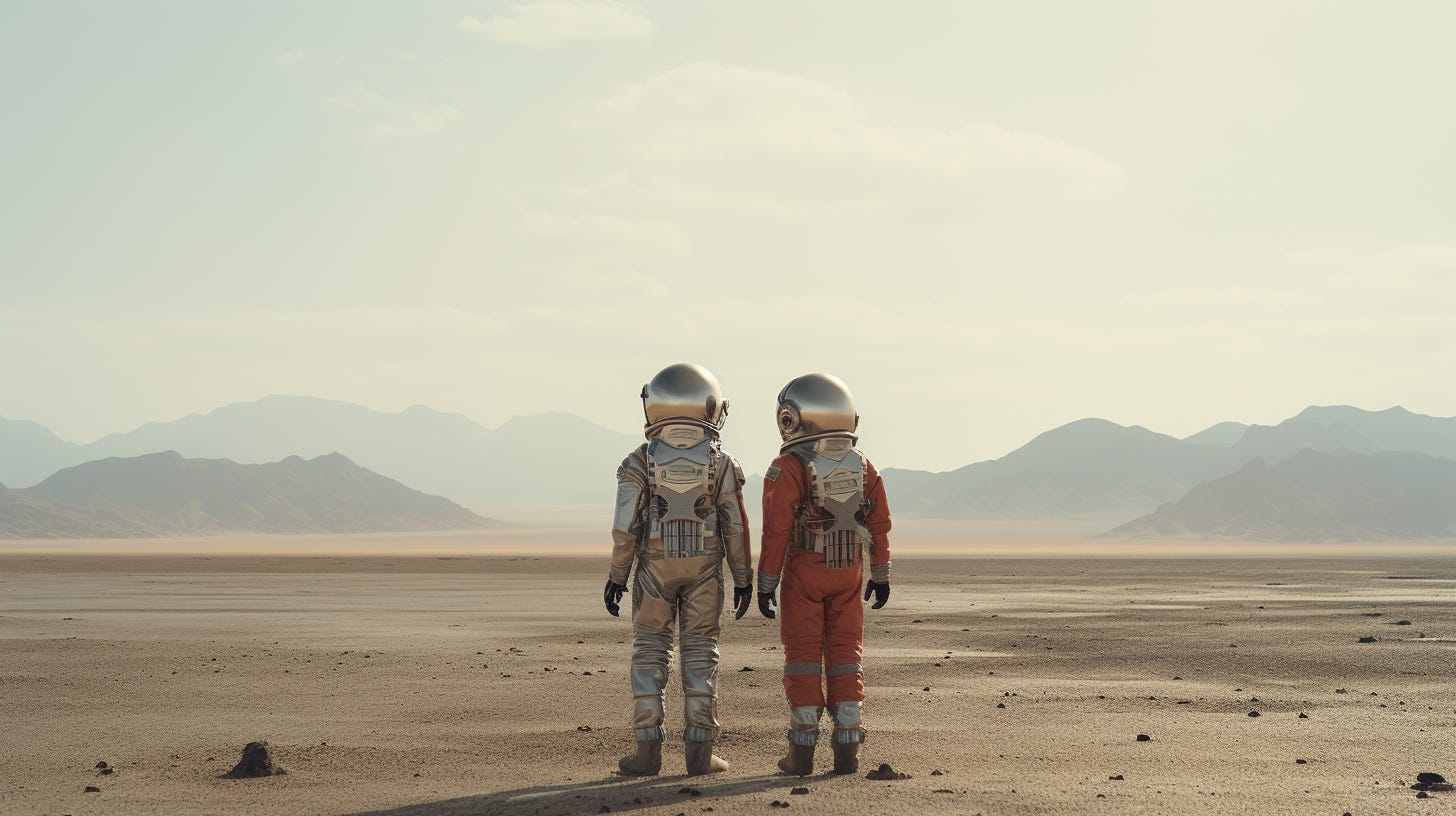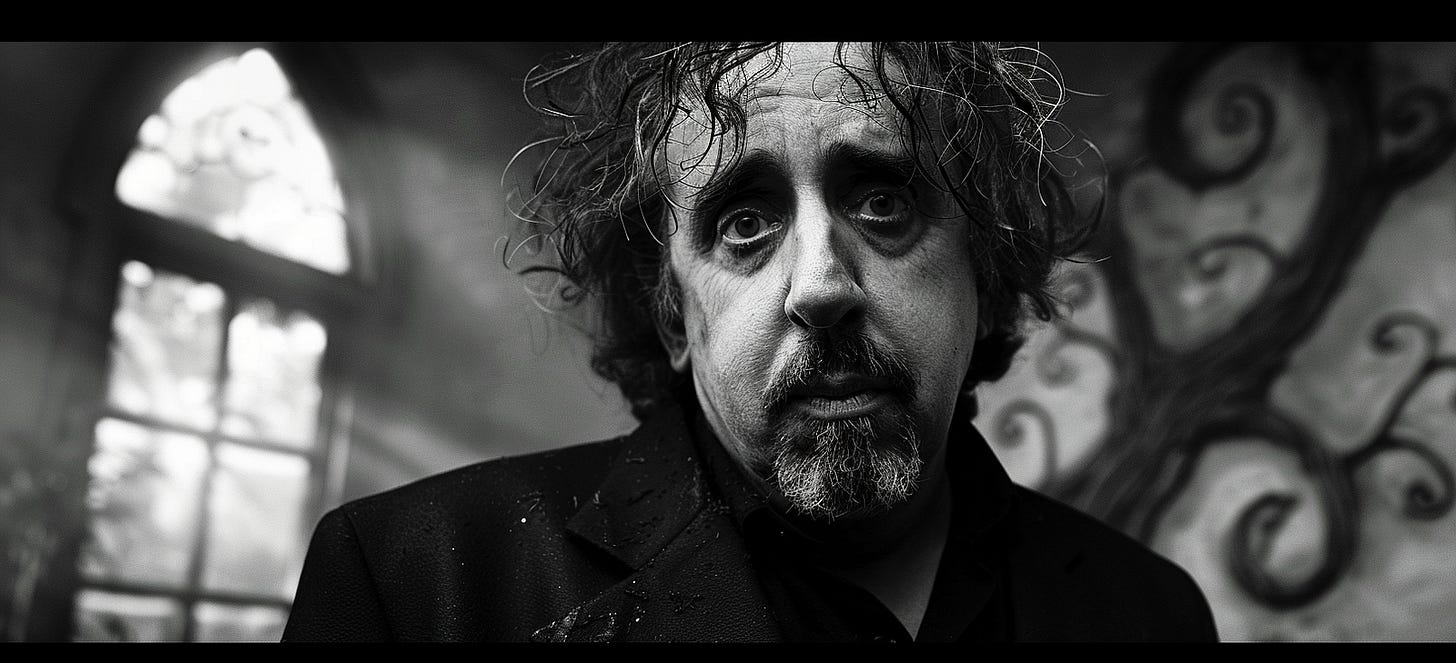My Open Letter to Tim Burton About His Revulsion at AI Art, and Our Shared Love of the Macabre
An AI artist replies to Tim Burton’s claim that AI art is “disturbing”
Context: During an interview for “Beetlejuice, Beetlejuice” with The Independent, Tim Burton expressed his horror at seeing fans use AI-generated art to mimic his style.
As an AI artist who has admired and previously drawn inspiration from Burton’s work, I wanted an opportunity to respond.“They had AI do my versions of Disney characters! I can’t describe the feeling it gives you. It reminded me of when other cultures say, ‘Don’t take my picture because it is taking away your soul. What it does is it sucks something from you. It takes something from your soul or psyche; that is very disturbing, especially if it has to do with you. It’s like a robot taking your humanity, your soul.” — Tim Burton
Dear Tim Burton,
I’m certain you’ve never heard of me. But if you’re horrified by AI images made in a Burtonesque style, you’ve probably seen some of my monsters.
In 2022, I went viral twice with my galleries on Medium featuring some of the first Tim Burton inspired AI generated images on the internet. The first was my Tim Burton Disney Princess series, “Princess Gothic”, viewed 50K times, followed soon after by “34 celebrities transformed into Tim Burton’s Beetlejuice characters”. The second gallery was picked up by Screen Rant:
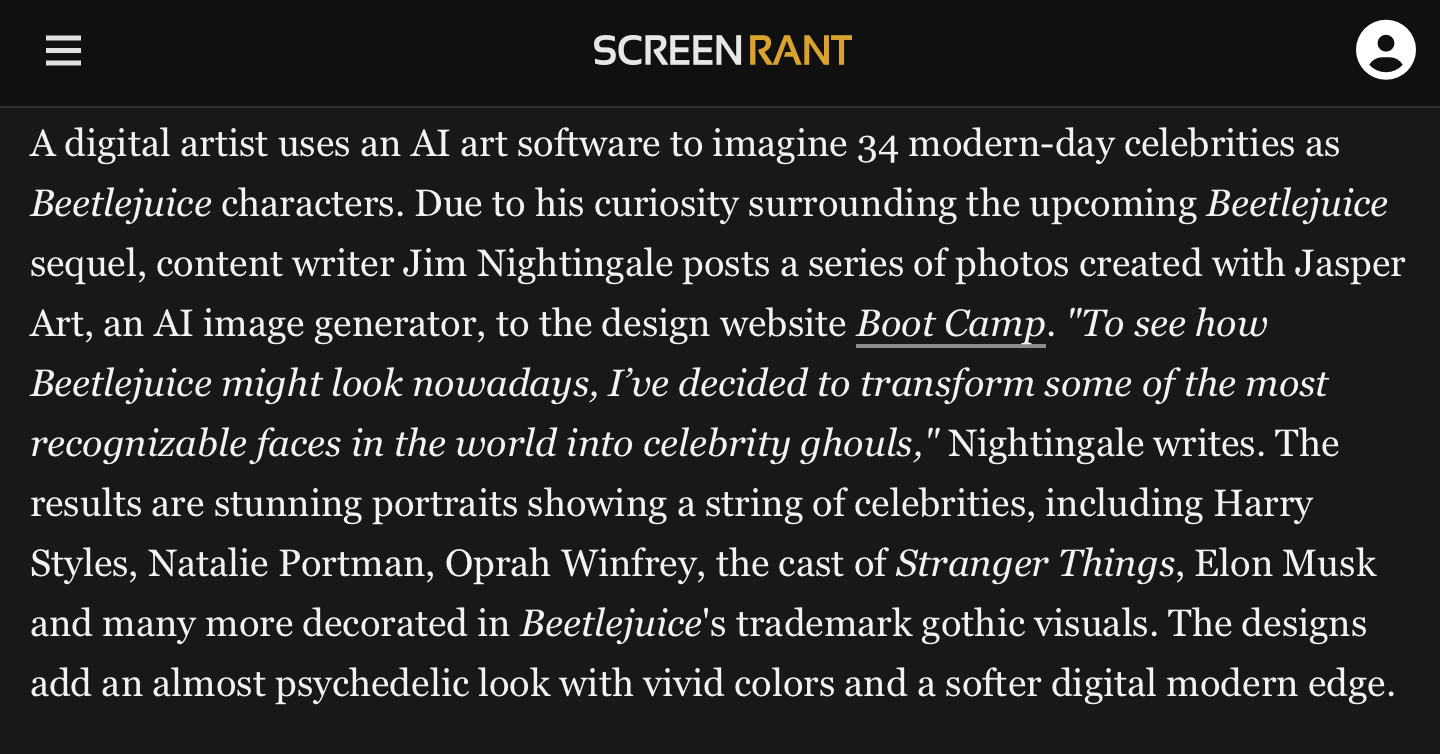
There was a point where if you Googled “Disney Princess Tim Burton”, the top image search results were my works. I’ve since been toppled by an imitator article on BuzzFeed — a case of being replaced by the copy of a copy (and the irony doesn’t escape me). Still, I can’t complain; I’d had 18K hits from Google. So when I heard your comments, I wondered if you’d seen mine.
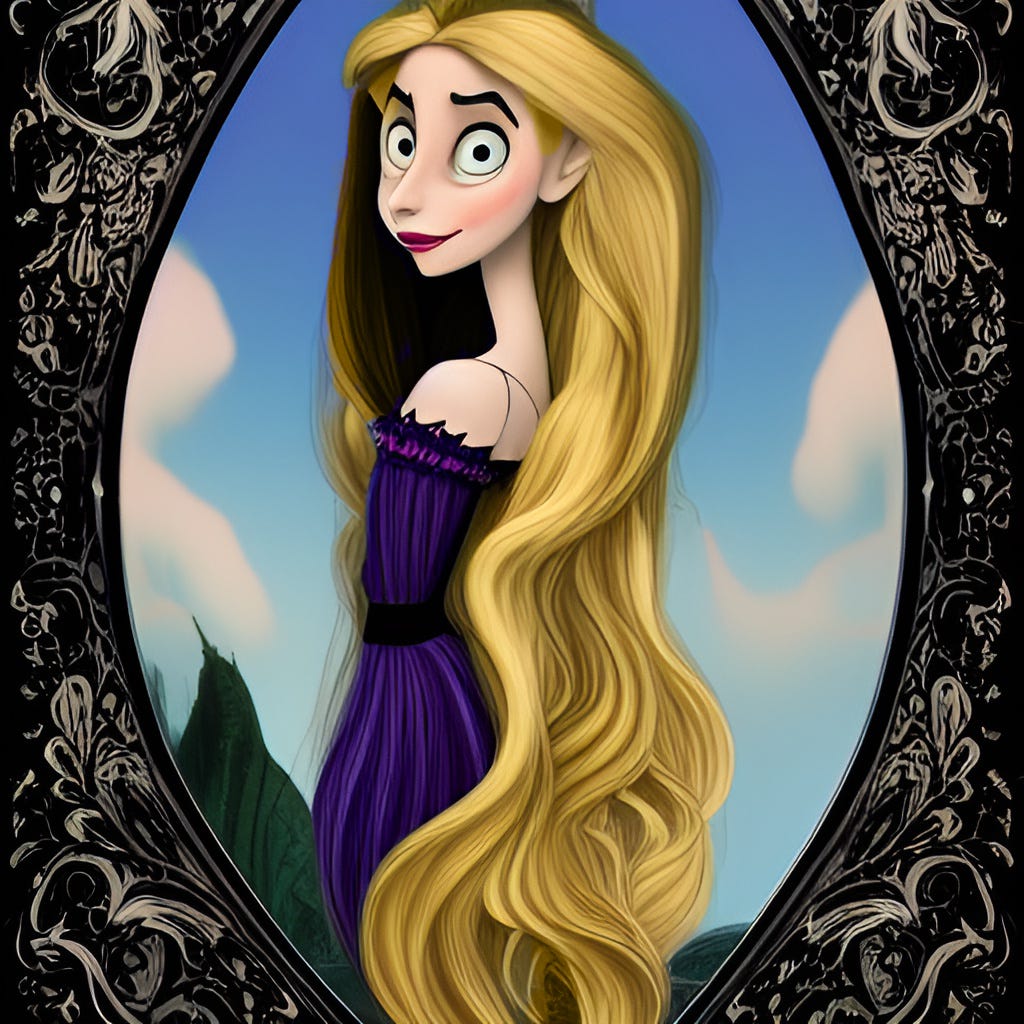
I’d like to point out that while my ‘Tim Burton images’ were made during this early stage in AI — I’m almost embarrassed by my clumsy attempts — I think they still stand up well against the Buzzfeed successors a year later.
However back in 2022, they were considered remarkable (Screen Rant announced them as “stunning”), and peers asked “How did you do that?” which shows there’s some skill involved. We were harbingers of a craft.
“Princess Gothic”: If Tim Burton had designed the Disney Princesses
Artificial Intelligence brings a Burton-esque touch to the classic Disney Princess lineupbootcamp.uxdesign.cc
Celebrity ghouls! See A.I. transform 34 celebrities into Tim Burton’s Beetlejuice characters!
Check out these amazing AI-generated celebrity portraits that look like they were taken straight from the set of…bootcamp.uxdesign.cc
Mr. Burton, your work inspired a generation, and my monsters were meant as an homage to the profound influence you’ve had on not only film but the psyche of a generation. I feel like a cat that proudly dragged in a rat, only to horrify the people it loves. When you say that AI art takes something from your soul, I get the reservation. Indeed, there’s a deeply personal element that can feel compromised when a machine mimics humans. However, I believe there’s another side to artistic desecration, something beautiful.
You’ve done it yourself. Of all people, I thought you’d understand. Your filmmaking is simpatico with the uncanny — and with chopping up our icons and cultural touchstones to make new, Frankenstein works of art.
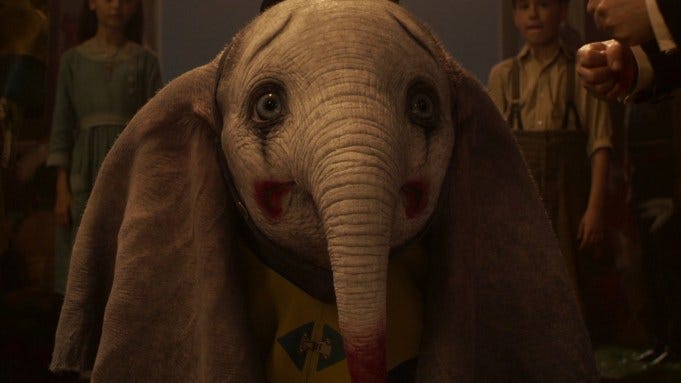
AI is the perfect madcap apparatus for “remix culture”, and it’s compatible with the content and style of your films because they’re of the same spirit.
We’ve seen Alice warped through your mirror darkly, and Batman; even Christmas (borrowing heavily from Rankin/Bass’s holiday specials). As a lifelong fan, I wanted to simulate what other characters might look like in your style. They weren’t meant to steal something from your soul, but give us a sneak peak into alternative worlds, like tuning into the Twilight Zone.
Somewhere, in all AI’s countless possibilities, there is the exact image you might have had in your mind’s eye if you hadmade these movies for real. Can you blame us for peering into the looking glass of AI’s latent spaces?
Can AI Art Assist Artists and Others with Aphantasia?
Some people can’t visualize. Now with AI generators, maybe they can.medium.com
For now those glimpses are imperfect, and perhaps they always should be; AI artists should be developing their own visions, and leave the images that never-were to rest in peace in the Neitherworld. Yours were the last “in-the-style-of” artworks I did; since then I’ve grown and stopped aping the greats.
If I’d sketched my earliest drafts of Tim Burton-inspired Disney Princess homages, they would’ve been seen for what they were: the rudimentary early works of a developing artist sticking his tongue out in playfulness — and concentration. While I — like most AI artists — started out referencing stylistic inspirations by name in prompts (back in the early days when we had no idea what we were doing), I quickly advanced to unbundling what appealed to me. Instead of names, I used art terms for patterns, textures, and forms that can be combined in unique ways when prompted by the artist. I’ve refined concepts and styles which are recognisably my own.
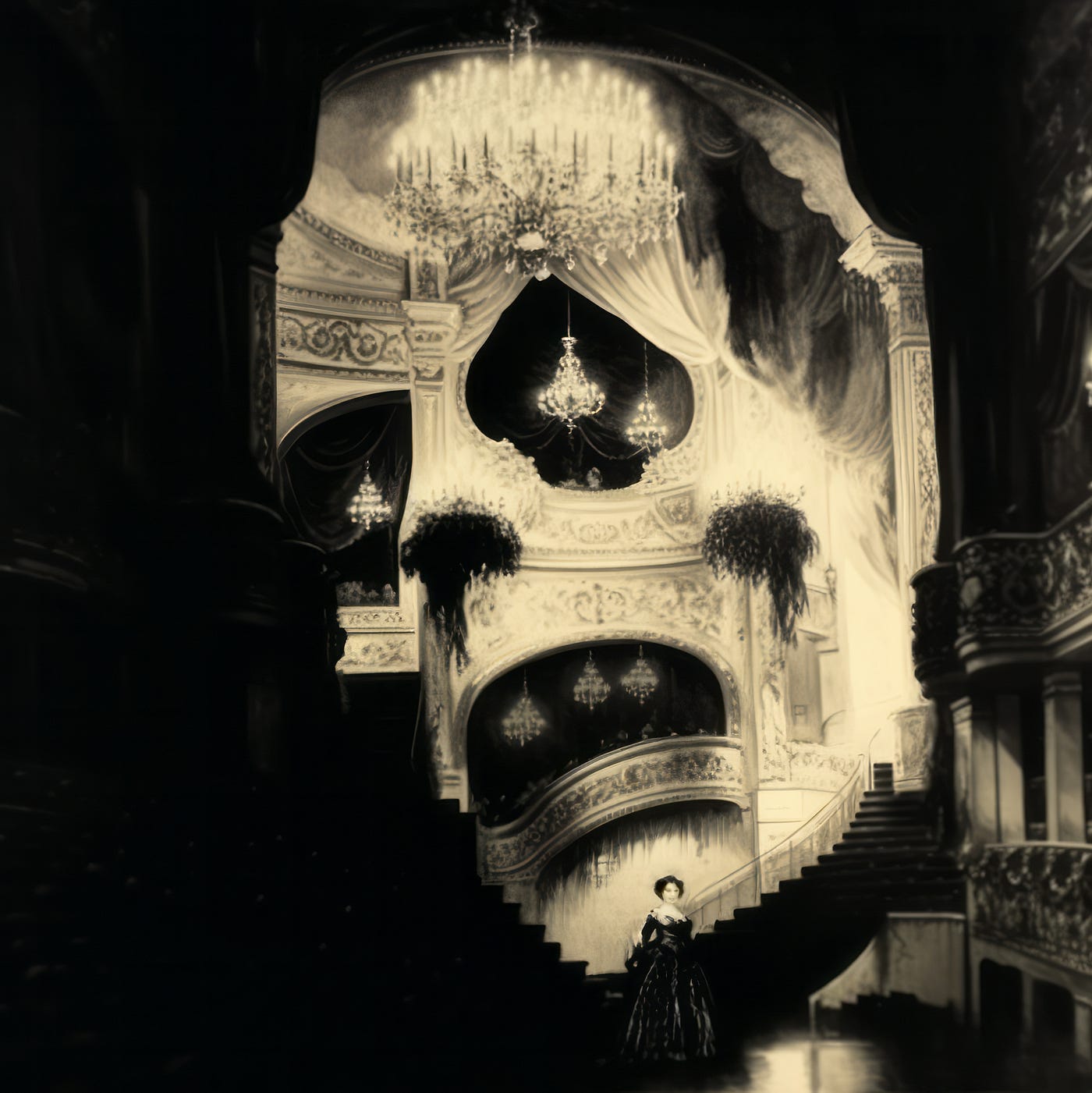
In the last 2 years, I’ve invented my own oddball style; I make images of invisible people going about their lives, subjects climbing out of frames, glimpses of the unseeable. I’ve also learnt new skills: I’ve started using LoRA and ComfyUI, and training my own datasets. I’ve found I’m a pretty good digital painter; most of my images are hybrid creations, using AI-generated elements together with hand-drawn digital art techniques.
Unseen Yet Unforgettable: How to generate AI images of invisible people (Prompts included)
Create compelling scenes that make invisible characters seem palpable and dynamic, using clothing, props, and…bootcamp.uxdesign.cc
I don’t just sit typing “names” — but that was never just all we did. Outsiders assume there was no craft — no discovery, no sweat and tears involved, no delirium — to generative art. That it was all given to us at a tap of a button.
If you’d only seen what we didn’t publish, and the thousands of hours we dedicated to learning how to wield this tool behind the scenes. Malcolm Gladwell says it takes 10K hours of dedicated practice to become skilled.
In the first days of AI art generators being widely released, around August of 2022, many artists like myself put in our first percent of those 10K hours. We were fine-tuning parameters long into the night, just like a traditional artist might spend sleepless hours with their brushes, paints and canvases
We worked round the clock nonstop, literally to the point of derangement.
You know, like crazed artists.
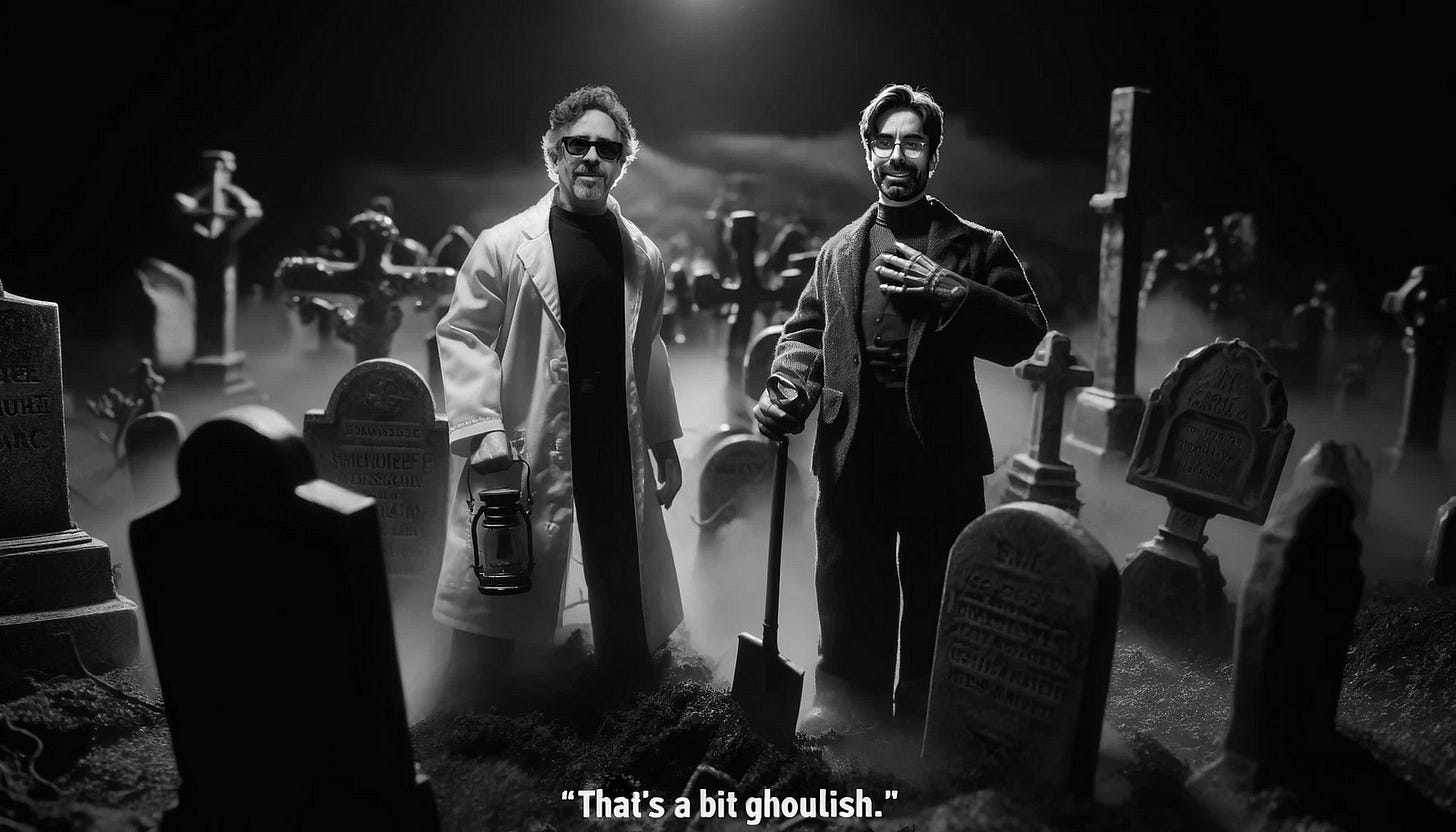
Did it sting, being called ‘disturbing’ by one of my heroes? You betcha. It’s like Doctor Frankenstein finding another resurrectionist among the graves and saying “That’s a bit ghoulish”. You’re probably the auteur who owes the most to others; you proudly wear your inspirations like a patchwork cloak.
The distinctive Tim Burton style we love is a ghoulish conglomeration of the works of masters who came before you, too. From an aesthetic torn from German Expressionist cinema, to the creepy drawings of Edward Gorey and Charles Addams, your idiosyncratic vision is grave-robbing.
And I say that as the greatest compliment. Your films taught us that there is beauty in the macabre, charm in the eerie, and humanity in the grotesque.
Who can look at Jack Skellington and not see J. R. Neill’s Jack Pumpkinhead from L. Frank Baum’s Oz books, filtered through the lens of F. W. Murnau?
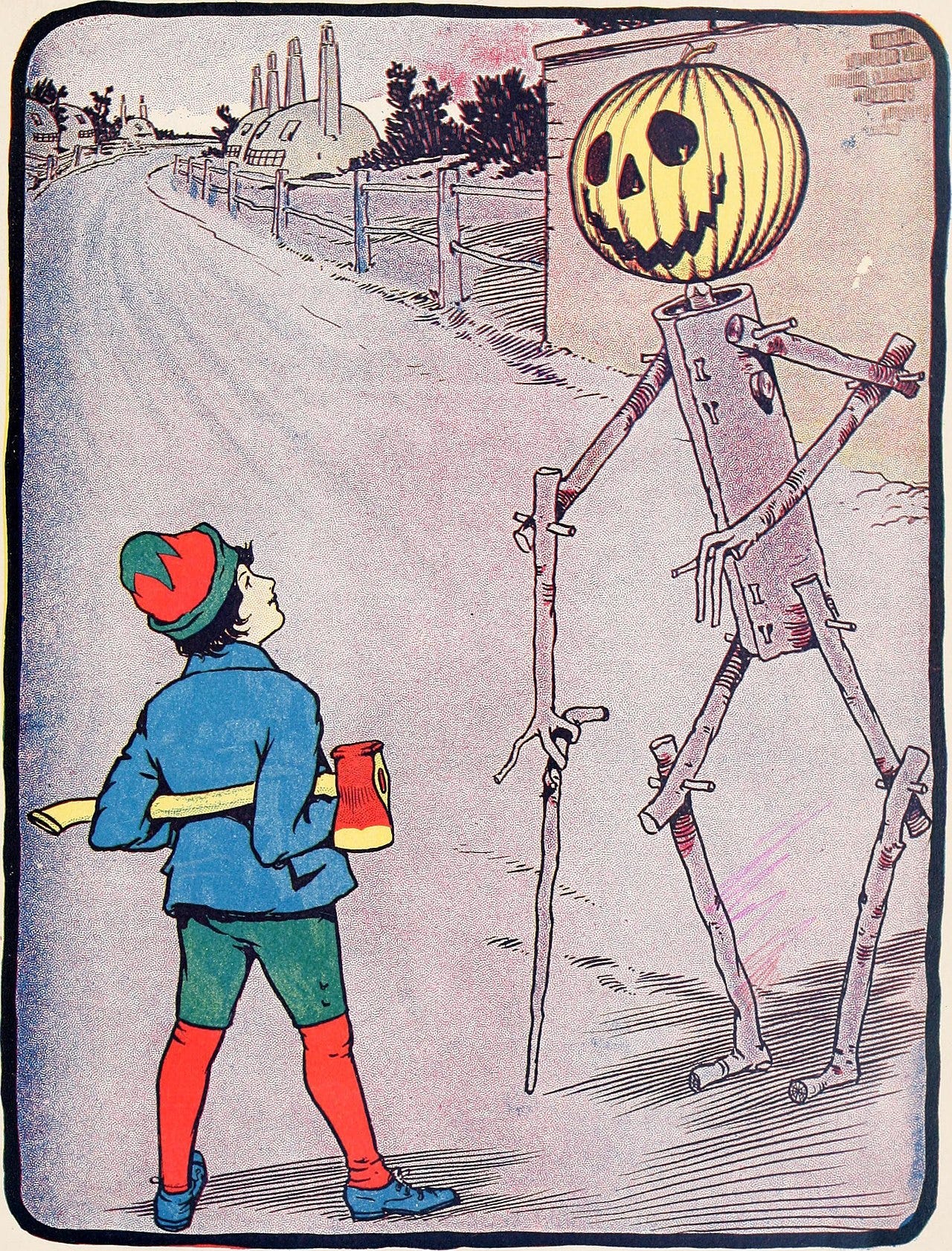
The iconography goes on; to list it all here would be a retrospective of your career. Don’t misunderstand: we adore what you do. But now everyone can make their own homages from the resurrected remnants of film, literature, art — a vast store of cultural material that can be reworked and reimagined. Cultural borrowing is an additive process. New layers are built atop the old.
It’s the advent of everyday auteurs. We can project what’s in our mind’s eye, in picture-perfect, cinematic detail, without need of a studio. Even Star Wars creator George Lucas — who founded Industrial Light and Magic (ILM) to pioneer digital effects — believes AI is the future of filmmaking.
Artificial intelligence may seem “soulless” to you, but we love it. It’s the sci-fi world of the robot Gort, ray guns, and flying saucers come true. What shameless wonders would Ed Wood have made with this technology?
Like Ed stealing mismatched stock-footage to piece together for Plan 9 from Outer Space, with no budget we can stick Jayne Mansfield’s head on Lassie the Wonder Dog and send her tottering through space on new adventures.
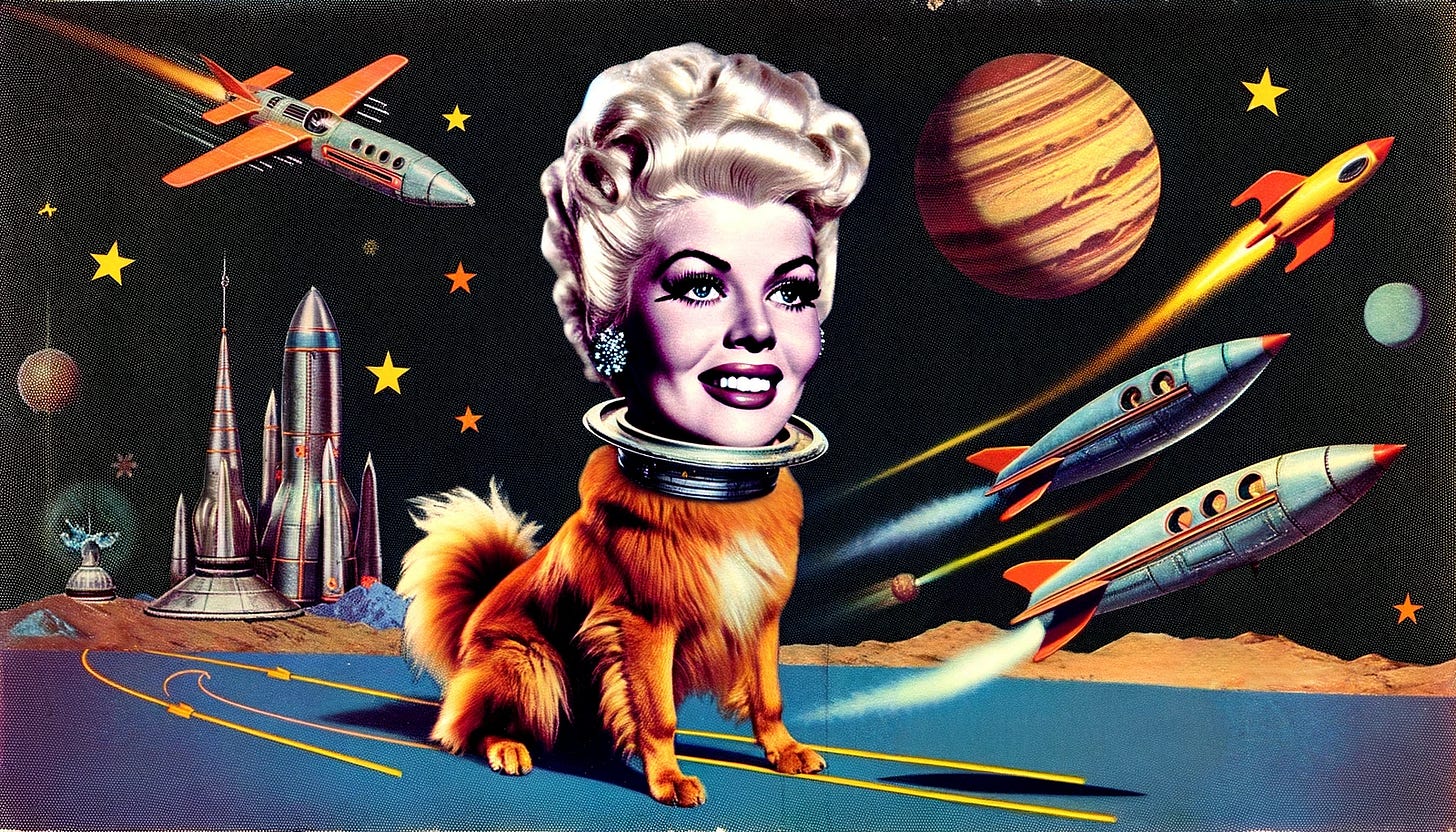
We’re all mad Dr Frankensteins now, stitching new creations together and bringing them to life with a jolt of promethean lightning — using forbidden technology — muttering our magic words of reanimation into the ether. We learnt it from you. We’re scavengers, ransacking traditions, the true Goths.
Not “Gothic” just in the sense of their historical pillaging, but also in the literary sense of exploring the macabre, the boundary between life and death, the old and the new. This reverence for and rebellion against the traditional forms is a hallmark of transformation. Is it so “disturbing”?
Perhaps Mary Shelley would have been disturbed by adaptations of Frankenstein, as her character was bequeathed from James Whale to Frankenweenie. Most people nowadays meet Frankenstein not through Shelley’s book, but as a Universal Studios’ Monster (or as a cereal box character!) We’ve been taught that monsters are handed down, piecemeal and partially devoured. And we’ve been told to gleefully play with our food.
You dug up these toys on a dark night. Maybe they were the same dead dolls Tootie buried in the backyard in Meet Me in St Louis? They never entirely belonged to you in the first place. Please let us play with them.
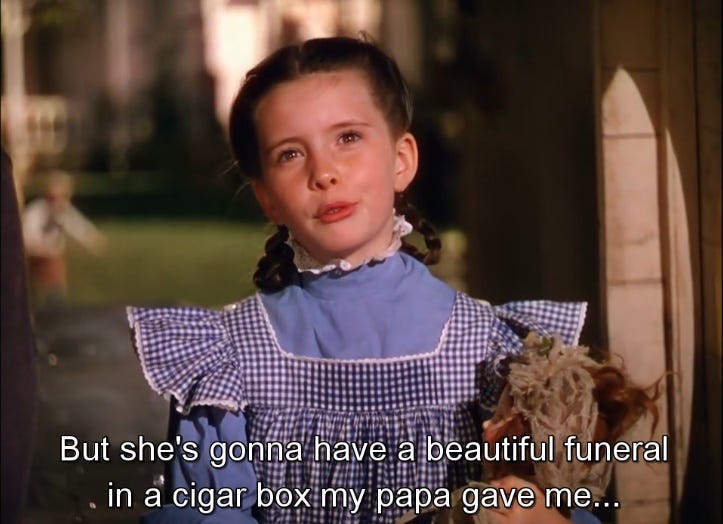
If it seemed like AI artists singled your work out, we did. It let us see if AI worked, and test out the extent of its mimicry. But if Tim Burton films have taught us anything, it’s to reassemble revered works into new narratives and aesthetics. Patchworks and decorative scars are a recurring motif.
So is taking something forbidden from the cultural graveyard. It pervades the subject of your films and their style. You restitch the familiar, leaving the threads showing. Didn’t you expect that one day we’d tug the strings?
Revivifying visual culture is your modus operandi, whether it’s borrowing from B-movies, German Expressionist films, Edward Gorey illustrations, Universal Monsters, Vincent Price himself, or ‘60s stop-motion animation.
All those references in your movies made it easier for us to reference yours, in turn, as prompting terms — as well as making them particularly inviting. They’re shadow-tied with the recombination, remix culture of uncanny AI.
Your genius lies in being a magpie of the campy and the creepy. What we do may be ‘disturbing’, but we learnt it from the best: you helped create us.
AI artists are children of the night, tap-tapping at the window. Now watch us fly.


